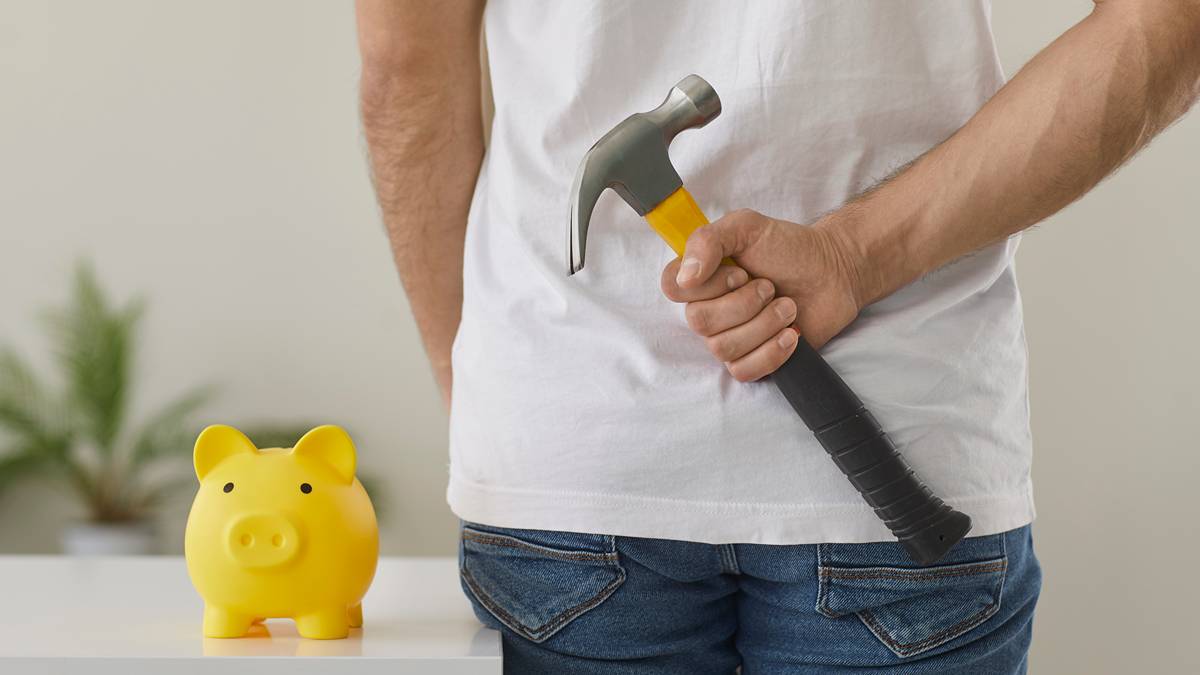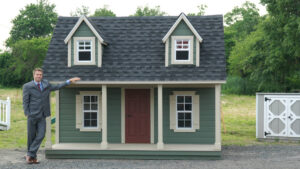Why raiding your super to pay the mortgage could backfire

Pic: Getty Images
As mortgage-free retirement becomes out of reach for many Australians, financial experts say asset-rich, cash-poor retirees have alternative solutions.
The dream of entering retirement mortgage-free is fading for millions of Australians, but a new report suggests raiding superannuation to clear the debt may not be the smartest move.
Nearly half of homeowners aged 55-64 now carry housing debt into retirement and more people are withdrawing lump sums from their super to pay off a mortgage, according to a report co-authored by Credere Consulting Services principal Harry Chemay and colleague Sahil Kaura.
Mr Chemay said there was a presumption that most Australian homeowners had paid off their mortgage at the point of retirement, but that applied to fewer and fewer people.
“We’re starting to see data that in middle Australia, more and more of them are looking potentially to their super balances to extinguish any remaining mortgage debt on their own home in order to settle up with the bank and then own their own home outright in retirement,” Mr Chemay said.
That undermined the income-generating potential of their remaining super balances, the report said.
“It would appear that for some Australians that they’re not getting the extra income, they’re basically using their super as a deferred savings vehicle to pay off debts that they couldn’t quite manage to pay off from employment income alone before retirement,” Mr Chemay said.
Instead, home equity release schemes may offer a better alternative for asset-rich but cash-poor retirees.
The report argued home equity release products were increasingly relevant amid an ageing population, rising property prices and cost-of-living pressures, with many retirees being asset-rich but cash-poor with significant wealth tied up in their homes.
The schemes involve homeowners receiving an amount upfront in return for granting the scheme’s provider a contractual right to a share of the property’s eventual sale proceeds.
The provider’s future share is larger than the initial cash amount they advanced. The report gives the hypothetical example of a homeowner receiving 20-30 per cent of their home’s value in cash now in return for, say, a 40–50 per cent share of the sale price decades later.
“Australia’s changing housing dynamics demand a retirement rethink,” Mr Chemay said.
“The dominant paradigm assumes households retire debt-free, but that’s increasingly unrealistic for many people. A better approach recognises the role of housing equity in bridging the gap between desired retirement lifestyles and available financial resources.”
The report, using independent research funded by home equity provider Homesafe Solutions, said while a median near-retiree couple might approach retirement with about $400,000 in super, if they were homeowners their dwelling might be worth between $750,000 and $1.2m.
Cotality data put the median dwelling value in the capital cities at $941,457 at the end of September.
“If you’re a homeowner in Australia you’re in a better position obviously than a renter as you approach retirement,” Mr Chemay said.
“The question then is do you want to access some of that equity, do you need to access some of that equity to smooth out your retirement lifestyle.”

The report cited an example of a couple, both aged 67, who received the age pension and had $420,000 total in superannuation and $200,000 still owing on a $1.5m home.
Using super to clear the debt led to a 44 per cent increase in their discretionary income, compared to a 69 per cent rise if they used a home equity release to pay out the home loan.
The report noted that using a home equity release solution to retire debt might allow more wealth to remain in the tax-exempt pension phase of super and continue compounding.
Mr Chemay said the home equity release industry remained modest with $4bn in outstanding reverse mortgage balances and a handful of players, but had been “rejuvenated” over the last five to seven years.
“The market is starting to reactivate because more Australians are reaching retirement still with debt outstanding and they’re looking at their options and going ‘well, maybe, home equity release may be one solution to continuing to service a mortgage in retirement’.”
The industry includes providers of traditional reverse mortgages – a loan secured against the home that does not require regular repayments – and the niche area of debt-free equity releases, where Homesafe is the only significant provider of that form of funding.
Under the Homesafe scheme the homeowner remains the full legal owner and has a guaranteed right of occupancy for life.
There is also a federal Home Equity Access Scheme that allows eligible older Australians to access a government loan secured against home equity. The debt is repaid upon sale of the home, when the owner permanently vacates the property or earlier at the borrower’s discretion. About 17,000 HEAS contracts were active as of June 2025.
Homesafe chief executive Dianne Shepherd said the report reinforced the need for solutions that respected people’s desire to age in place while unlocking the value of their homes in a safe and responsible way.
“The market has evolved beyond the historic options of downsizing, doing nothing, or relying on loans with principal and compounding interest charges,” she said.
The report called for super funds and financial advisers to help educate consumers and assess retirement readiness, arguing that taking a total household balance sheet and cashflow lens highlighted how rising home loan debt impinged on the retirement income system.
This article first appeared in The Australian as Using super to pay off mortgage in retirement v home equity release
Related Topics
UNLOCK INSIGHTS
Discover the untold stories of emerging ASX stocks.
Daily news and expert analysis, it's free to subscribe.
By proceeding, you confirm you understand that we handle personal information in accordance with our Privacy Policy.








